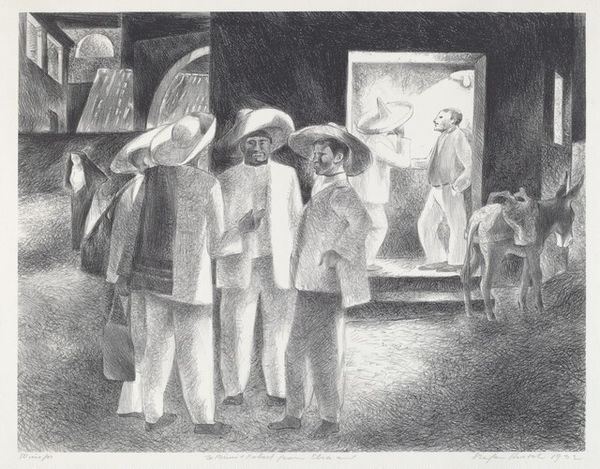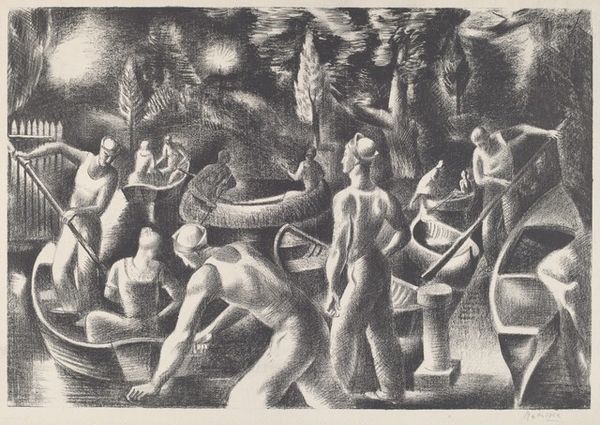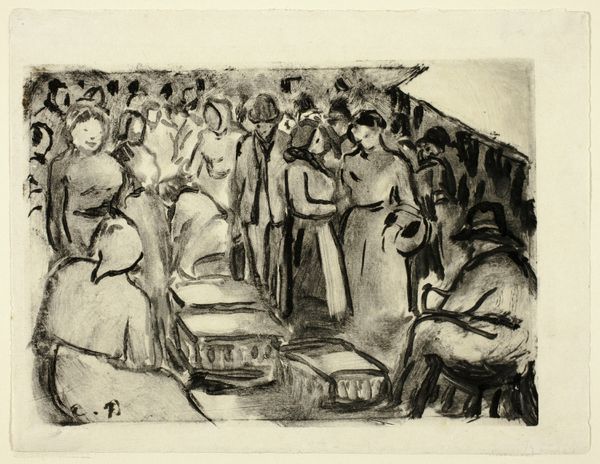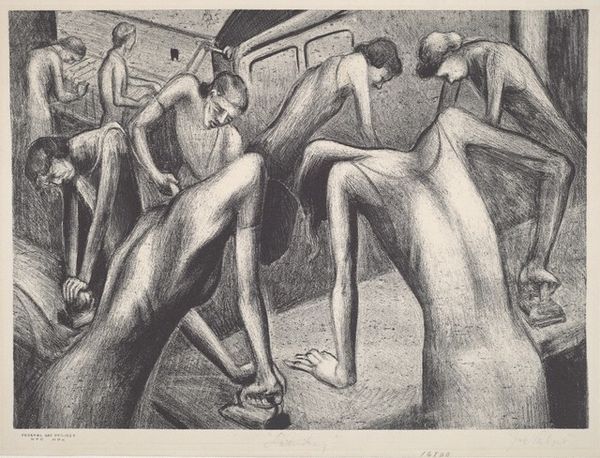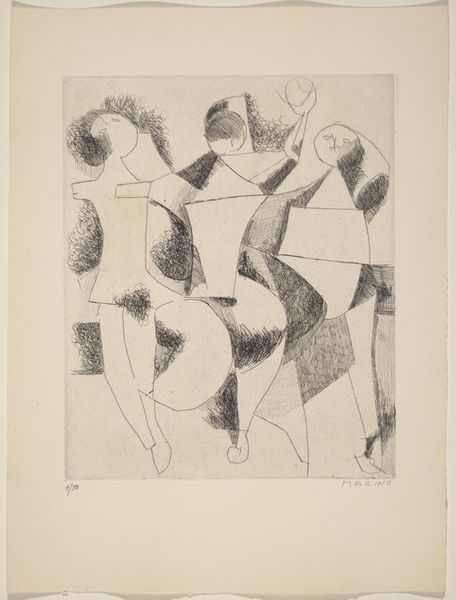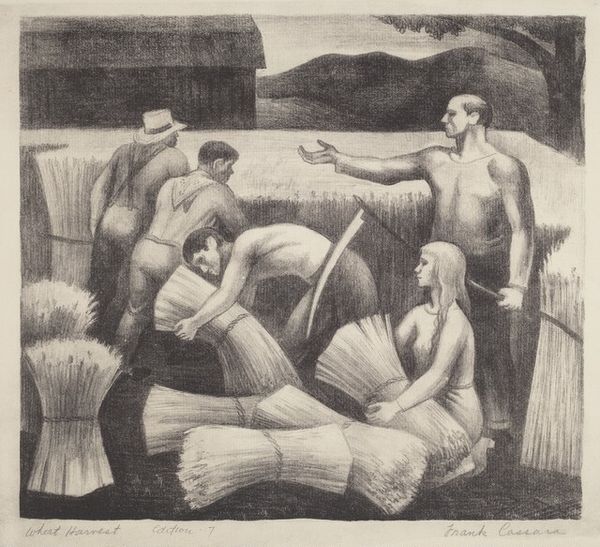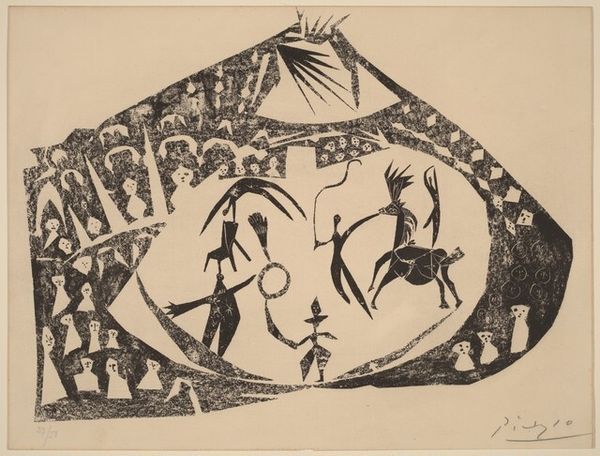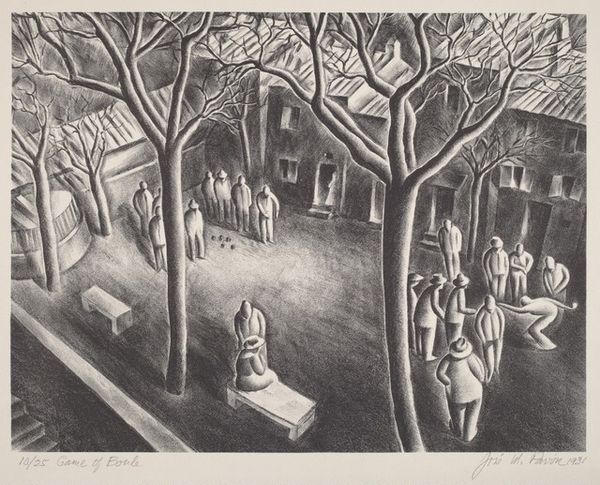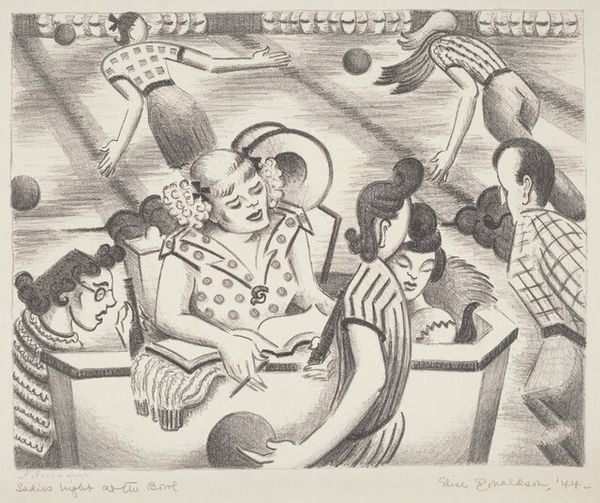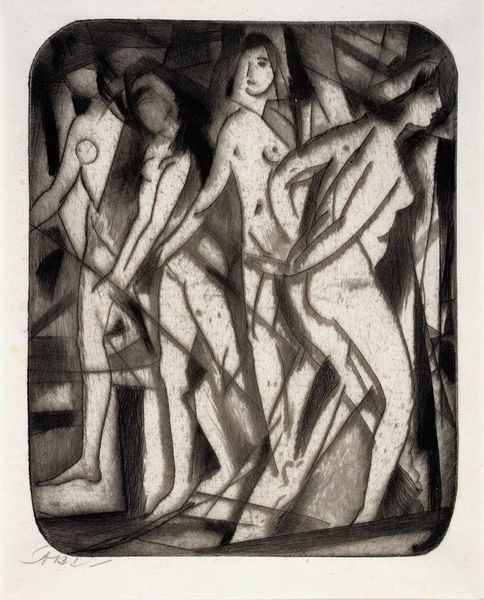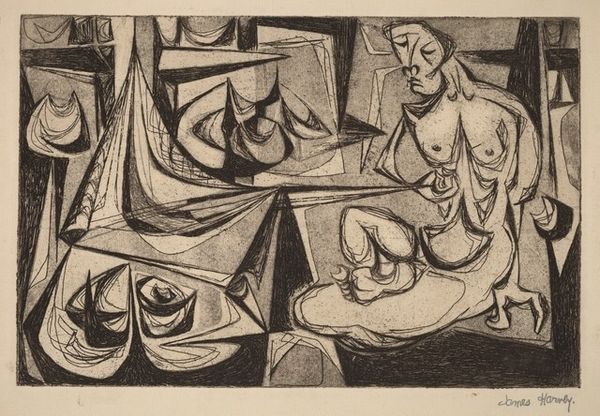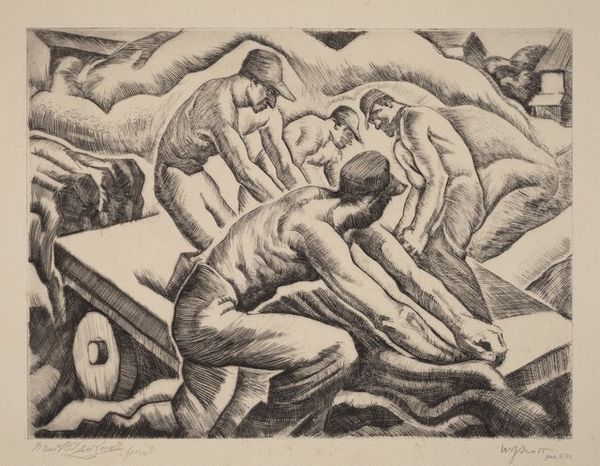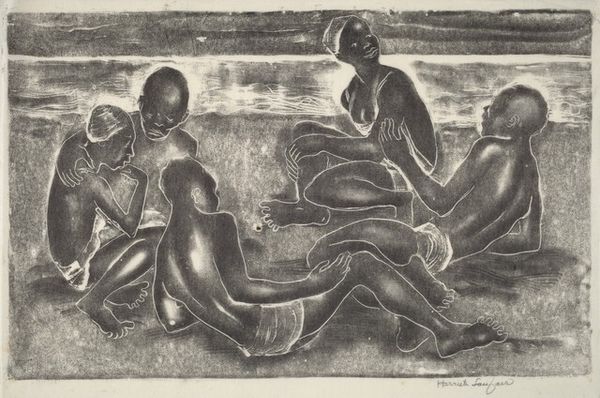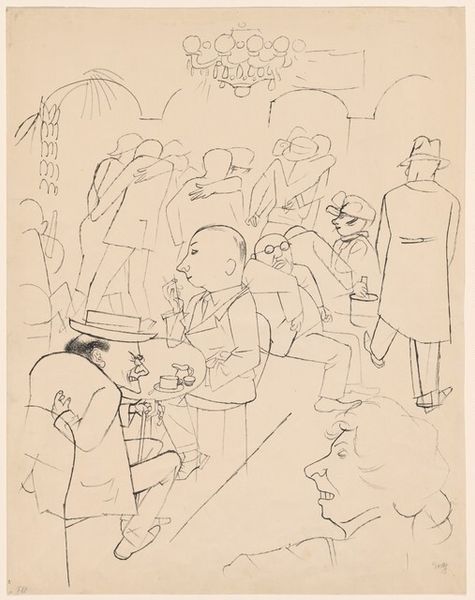
drawing, print, pencil
#
portrait
#
pencil drawn
#
drawing
# print
#
landscape
#
caricature
#
figuration
#
pencil drawing
#
pencil
#
mexican-muralism
#
portrait drawing
#
realism
Dimensions: image: 234 x 288 mm sheet: 292 x 406 mm
Copyright: National Gallery of Art: CC0 1.0
Curator: Let's discuss this piece by José M. Pavón titled "Noon Hour," created in 1932. Editor: There's a profound stillness to it, almost like time is suspended. The stark contrasts in light and shadow really create a sense of anticipation, but of what? Curator: I think understanding the print medium provides a starting point. Consider the labor required to create such detailed gradations with what appears to be a very simple palette. This would involve considerable control over tools and physical effort by the artist. Editor: Absolutely. I immediately see the subjects' somber disposition in light of Mexican Muralism which had a socio-political stance. Knowing the era, doesn’t this portrayal become a social commentary? The common people, seemingly at rest, perhaps workers taking a break, rendered with such stark realism...it hints at something deeper than just a tranquil scene. Curator: I agree that Pavón seems interested in social realism. If we examine Mexican Muralism, it clearly had the means to convey its intended messages using fresco or other similar painting processes which involved working collectively with assistants. Pavón seems to favor printmaking, suggesting that the piece was created in a studio or other context in which he was acting primarily alone. Editor: Still, there is something haunting in the rendering of their faces. The anonymity created by the shadow serves to represent the countless unseen, unheard laborers of the time. Perhaps they’re taking shelter from the harsh sun, both literally and metaphorically, escaping the social realities even just for a moment. I’m looking at their clothing and wondering whether or not a modern viewer could perceive the uniformity as representative of their being cogs in a much bigger, oppressive, machine? Curator: That's a perceptive reading, though I lean towards acknowledging how materials—particularly the cost and availability of certain media—affect artistic choice and reception. This is evident even in contemporary installation. The choices the artist has to make often shape our response to any particular art piece. Editor: A good point. Seeing art this way certainly gives pause to considering its impact beyond surface aesthetics. Curator: Agreed. It allows us to reconsider what art is capable of expressing under certain material conditions and the means to deliver such expression.
Comments
No comments
Be the first to comment and join the conversation on the ultimate creative platform.
